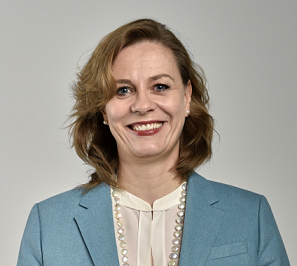There has been much focus in recent years on the geographical enlargement of CERN. Since the process began in 2010, our membership has grown to 22 countries. We have welcomed a number of Associate Members, and we now have International Collaboration Agreements with close to 50 different countries. This is testament to a dynamic and growing particle physics field, which is very welcome news for the continuing good health of CERN.
But it is our Member States I want to focus on here. Over the years, they have built and sustained the laboratory with us. A key objective of the International Relations Sector is therefore to ensure that we always have an effective and open dialogue with the Member States that have always supported the mission and ideals of basic research. The Member State Relations Section takes the lead in coordinating these efforts to allow us to nurture that essential relationship to the fullest extent possible.
There have always been senior members of personnel with a role in managing CERN’s relationship with their home countries, just as we have always monitored each Member State’s return on investment in terms of such things as employment, industrial return and knowledge transfer. However, we now have formalised the role of Management Liaisons for each Member State for the first time, giving them a mandate to enhance the dialogue and be more proactive. Over the past year, they have evolved into an effective network of colleagues who understand their countries and who understand CERN. They play an invaluable role in facilitating ongoing communication, preparing high-level visits and, increasingly, fostering community building among their compatriots at CERN. If you’d like to know who your country’s liaison officer is, you’ll find them all here. As you’ll see, they represent a diverse cross-section of CERN people and a considerable pool of knowledge, which further strengthens them collectively as a network.
We are constantly developing our ability to manage return on investment, bringing together existing tools that monitor numbers of staff, fellows and associates with others that keep an eye on procurement, knowledge transfer, participation in visits and teacher programmes as well as coverage in media and social media. These tools will allow us to see at a glance how each Member State is doing, and where action might be required. We can then target our efforts more precisely, for example by promoting opportunities available at CERN to those who may be unaware of them, or by analysing the perceived obstacles preventing companies from tendering for CERN contracts when they are well equipped to do so.
Another recent initiative is the establishment of thematic forums to share and consolidate best practice in a number of areas. In some cases, we have built on existing networks, such as the Knowledge Transfer Forum. Others, like the Teacher and Student Forum, are new.
CERN’s founding Member States showed great vision when they established the Organization in the 1950s. Since then, the growing family of CERN Member States has continued to support us through thick and thin. Their confidence has been rewarded in the form of knowledge, training, technology and international collaboration for the benefit of all. It’s a strong relationship, and one that we are striving to develop further.

